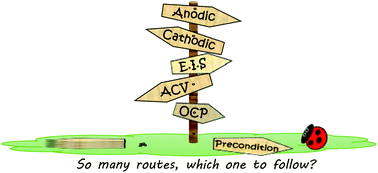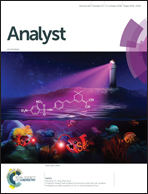Effects and controls of capacitive hysteresis in ionic liquid electrochemical measurements†
Abstract
Capacitance vs. potential relationships help electrochemists better understand electrode–liquid interfacial behaviors. However, the current ionic liquid literature does not have a unified experimental approach, and hysteresis effects are of significant concern. Known experimental variables that can influence capacitance–potential data include electrode material and morphology, potential scan direction, equivalent circuit model applied during analysis, and, to some extent, the electrochemical technique employed. To our knowledge, the present work is the first systematic study of four major variables that are relevant to IL-based capacitance measurements, and of their effects on resulting capacitance curvature. We examine: (1) the potential range explored, (2) the potential scan direction applied, (3) the data acquisition protocol used to collect data, and (4) the electrochemical technique used to generate capacitance data. Specifically, we find that all four of these (some more than others) ‘user-defined’ experimental variables influence the resulting capacitance–potential curvature for a typical ionic liquid electrochemical system. In an effort to minimize bias and to permit better comparisons of data collected from different laboratories we provide guidelines to help critically assess IL capacitance–potential data.



 Please wait while we load your content...
Please wait while we load your content...